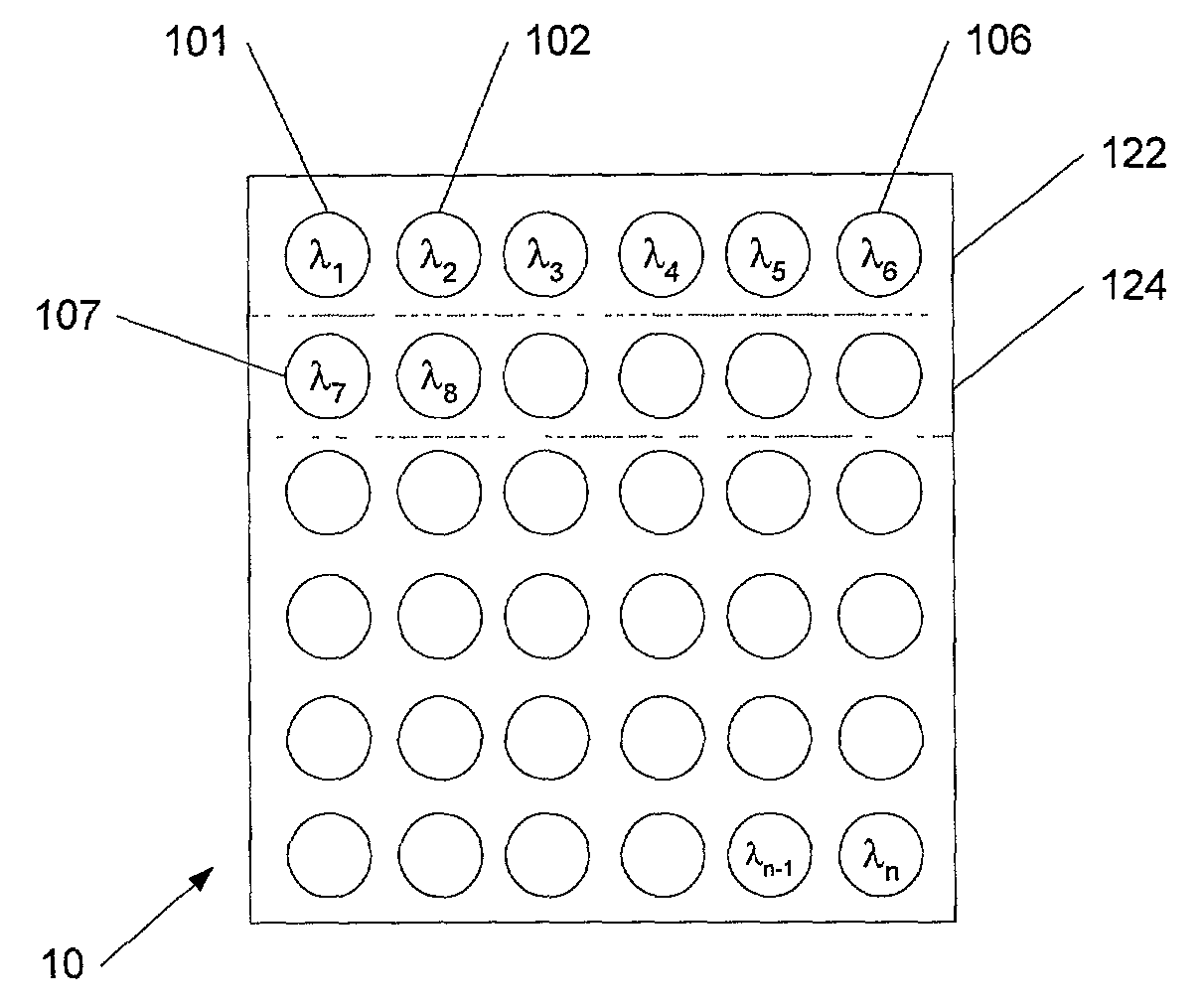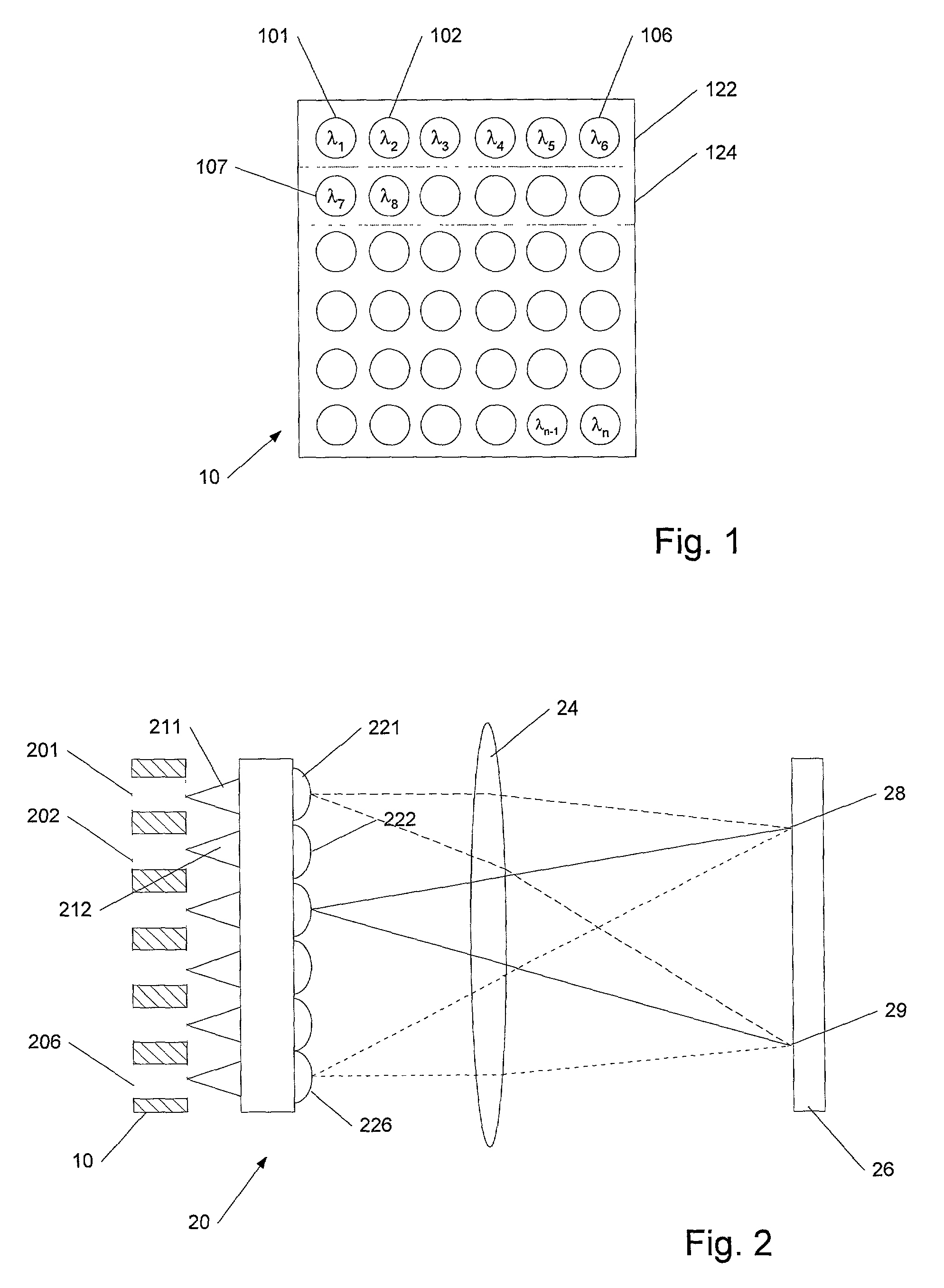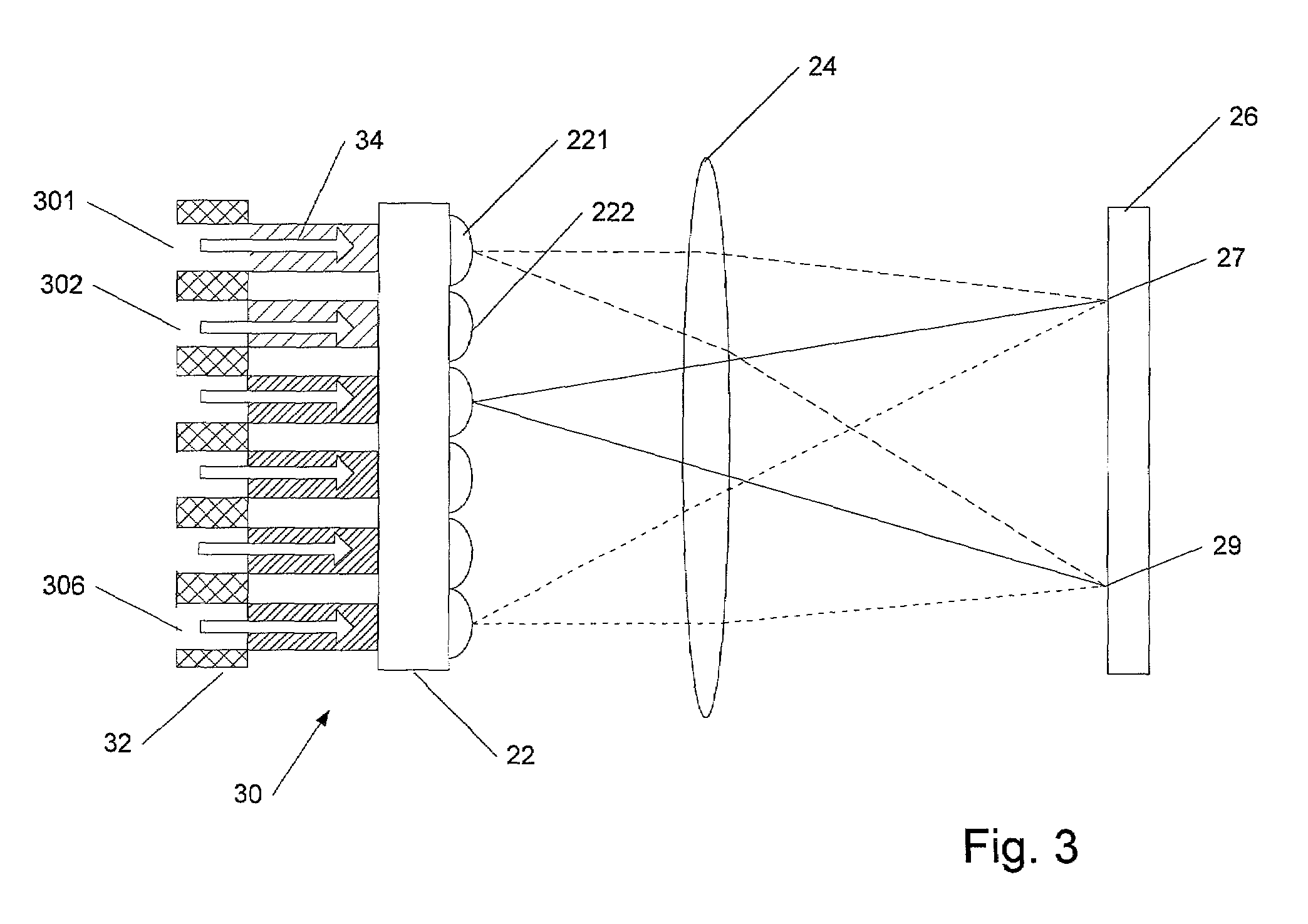Systems and methods for speckle reduction through bandwidth enhancement
- Summary
- Abstract
- Description
- Claims
- Application Information
AI Technical Summary
Benefits of technology
Problems solved by technology
Method used
Image
Examples
Embodiment Construction
[0024]The invention is directed to a bandwidth-enhanced laser light source for image projectors. In particular, the laser light source described herein can reduce speckle in projection imaging applications.
[0025]Referring now to FIG. 1, bandwidth-enhanced laser light is produced from a two-dimensional (2-D) array 10 of spatially separated, discrete emitters of laser radiation 101, 102, . . . , wherein each emitter 101, 102, . . . has a respective spectral bandwidth Δλi centered at some arbitrary red, green or blue wavelength λ0i. The elements of the array are designed to have slightly different central wavelengths, thereby creating an ensemble bandwidth ΔΛ which is greater than the bandwidth Δλi, of any individual emitter in the array. By engineering precisely the amount of ensemble bandwidth ΔΛ required for the cancellation of speckle, the quasi-monochromatic property responsible for the appearance of fully-saturated color is preserved. Laser radiation in the wavelength range of in...
PUM
 Login to View More
Login to View More Abstract
Description
Claims
Application Information
 Login to View More
Login to View More - R&D
- Intellectual Property
- Life Sciences
- Materials
- Tech Scout
- Unparalleled Data Quality
- Higher Quality Content
- 60% Fewer Hallucinations
Browse by: Latest US Patents, China's latest patents, Technical Efficacy Thesaurus, Application Domain, Technology Topic, Popular Technical Reports.
© 2025 PatSnap. All rights reserved.Legal|Privacy policy|Modern Slavery Act Transparency Statement|Sitemap|About US| Contact US: help@patsnap.com



